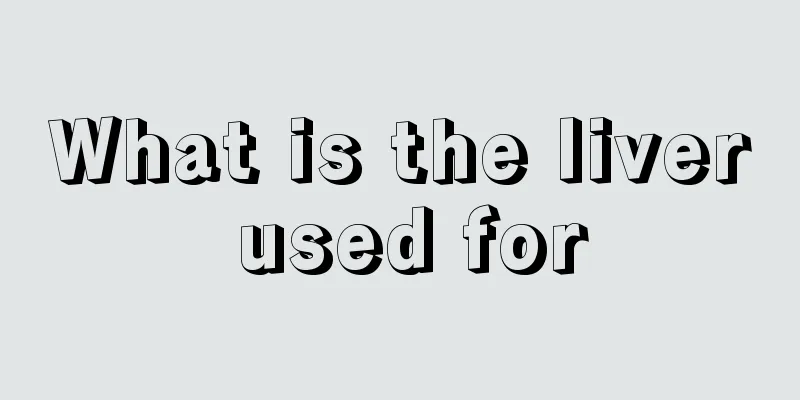What is the liver used for

|
What is the liver used for? The liver is one of the most important organs in the human body. It has many functions. It can participate in the metabolism of fat and promote the secretion of bile. The liver is also the largest digestive organ in the human body. If there is a problem with the liver, it will cause great harm to human health. There is a Chinese idiom called "肝胆相照", whether there is a problem with the liver or the gallbladder, they will affect each other. What is the liver used for? 1. The function of the liver: bile secretion Liver cells can continuously produce bile acids and secrete bile, which can promote the digestion and absorption of fat in the small intestine during the digestion process. Every day, 600-1100 ml of bile is transported to the gallbladder through the bile duct. The gallbladder concentrates and discharges bile. Bile also has the function of excreting hormones and harmful substances. 2. The role of the liver in fat metabolism The liver is a hub for fat transport. After digestion and absorption, part of the fat enters the liver and is later converted into body fat and stored. When you are hungry, stored body fat can be transported to the liver and then broken down. In the liver, neutral fat can be hydrolyzed into glycerol and fatty acids. This reaction can be accelerated by hepatic lipase. Glycerol can be utilized through the sugar metabolism pathway, while fatty acids can be completely oxidized into carbon dioxide and water. The liver is also one of the main organs for the synthesis of fatty acids, cholesterol, and phospholipids in the body, and excess cholesterol is excreted with bile. The various components of blood lipids in the human body are relatively constant. The ratio is regulated by liver cells. When fat metabolism is disordered, fat can accumulate in the liver and form fatty liver. 3. The role of the liver in sugar metabolism The main ingredient in the staple foods we eat every day is sugar. After being digested by the gastrointestinal tract, it turns into glucose and is absorbed by the intestines. Then it enters the liver through the portal vein. The liver then synthesizes it into glycogen and stores it in the liver. When the body's life activities require it, liver cells can break down glycogen into glucose to provide the energy needed by the body. Once the blood sugar concentration changes, the liver will play a regulatory role. 4. The role of the liver in vitamin metabolism In addition to relying on carbohydrates, proteins and fats to provide energy for life activities, human life is also inseparable from vitamins. For example, the synthesis and storage of vitamin A, vitamin B, vitamin C, vitamin D and vitamin K are closely related to the liver. Abnormal vitamin metabolism occurs when the liver is significantly damaged. Regular intake of B vitamins and vitamin C by patients with hepatitis or other liver diseases is beneficial to the recovery of liver disease. If secondary vitamin A deficiency occurs, night blindness or dry skin syndrome may occur. |
<<: The efficacy of red bean, coix seed and poria
>>: What medicine is used to regulate the liver, kidney and spleen
Recommend
How to regulate diet after radiotherapy for nasopharyngeal carcinoma What should patients pay attention to?
The main method for treating nasopharyngeal carci...
What are the symptoms of Helicobacter pylori gastritis
The symptoms of Helicobacter pylori infection are...
How to use aloe vera to wash your face and protect your skin?
Washing our face and cleaning our skin is somethi...
Why does my butt hurt? What are the causes of waist and buttock pain?
In our daily life, we should often experience pai...
Which lotion is good for moisturizing
Lotion is a necessity for our daily skin care. It...
Treatment of kidney cancer
I believe everyone knows how many happy families ...
The most common early symptoms of melanoma
Melanoma is one of the surgical diseases. Most pe...
Don't use these three types of mobile phone ringtones
When I was sleeping, I was startled by the sudden...
What medicine should children take for urticaria
Urticaria is a common skin disease, which is caus...
What’s the matter with itchy ears and excessive earwax?
If your ear canal is normal at ordinary times, bu...
What causes chicken skin?
The problem of goose bumps on the skin is believe...
What medicine is better for treating ovarian tumors
Traditional Chinese medicine has less toxic side ...
The efficacy of moxibustion on the head
There are many acupoints on people's bodies, ...
What to do if you have a stuffy nose and runny yellow nose
Nasal congestion and clear yellow nasal discharge...
Conservative treatment for early rectal cancer
When it comes to cancer, many people always think...









